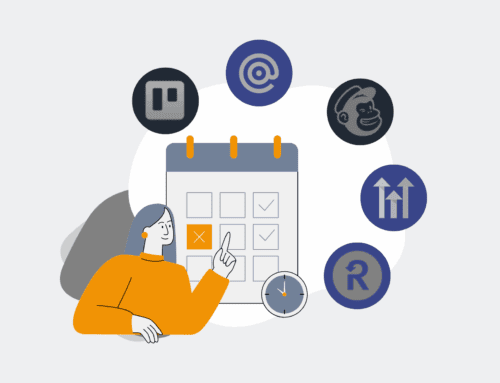The Evolution of Resume Screening: From Manual to Automated
In the relentless pursuit of top talent, organizations have long grappled with the monumental task of resume screening. What once involved mountains of paper and hours of painstaking manual review has dramatically transformed, ushering in an era where automation and artificial intelligence are not just buzzwords, but essential tools for strategic talent acquisition. The journey from human eyes sifting through applications to intelligent systems identifying ideal candidates is a testament to innovation, addressing critical challenges of efficiency, bias, and scalability in the hiring process.
The Era of Manual Screening: A Bygone Bottleneck
Not so long ago, HR departments were often overwhelmed by the sheer volume of applications. Every job posting, particularly for in-demand roles, could generate hundreds, if not thousands, of resumes. The process was inherently manual, prone to human error, and riddled with unconscious biases. Recruiters, under immense time pressure, would often spend mere seconds glancing at each resume, leading to potential oversights of highly qualified candidates and the advancement of less suitable ones based on superficial criteria.
This labor-intensive approach wasn’t just inefficient; it was costly. Hours spent on initial screening meant less time for engaging with promising candidates, conducting interviews, or focusing on strategic HR initiatives. The hiring cycle lengthened, critical positions remained unfilled, and the organization’s competitive edge in the talent market began to erode. It was a bottleneck that stifled growth and innovation, particularly for high-growth B2B companies seeking to scale rapidly.
The First Wave: Keyword Filters and Early ATS
The dawn of the Applicant Tracking System (ATS) marked the first significant step towards automating resume screening. Early ATS platforms introduced keyword filtering, allowing recruiters to set specific terms, skills, and qualifications that applicants needed to mention to pass the initial digital gate. This was a revolutionary shift, instantly reducing the pile of resumes to a more manageable shortlist.
While a vast improvement over manual methods, these early systems had their limitations. They were rigid and often too literal. Candidates quickly learned to “keyword stuff” their resumes, often at the expense of genuine relevance or coherent presentation. Highly qualified individuals might be overlooked simply because they used synonyms or different phrasing for a required skill. The nuance of human language, the context of experience, and the intangible qualities that make a great hire were largely lost in this initial wave of automation. It streamlined the process but sometimes at the cost of precision and true candidate insight.
The AI Revolution: True Intelligence in Talent Acquisition
Today, the evolution has reached a new pinnacle with the integration of AI and machine learning into resume screening. This is where the process truly transforms from simple filtering to intelligent analysis. AI-powered systems go far beyond basic keyword matching, delving into the semantic understanding of resumes, evaluating context, and even predicting candidate success based on a multitude of data points.
Beyond Keywords: Semantic Understanding and Predictive Analytics
Modern AI-driven resume parsers leverage natural language processing (NLP) to understand the *meaning* behind the words, not just their presence. They can identify transferable skills, recognize different industry terminologies, and extract relevant experience even if it’s not explicitly stated in a precise keyword. This allows for a much more holistic and accurate assessment of a candidate’s profile.
Furthermore, AI can analyze patterns from successful hires within an organization, cross-referencing past performance data with resume content to predict which candidates are most likely to thrive. This predictive capability moves screening from a reactive, elimination-based process to a proactive, identification-based strategy, ensuring that the best-fit candidates are surfaced efficiently.
Mitigating Bias and Enhancing Candidate Experience
One of the most profound impacts of AI in resume screening is its potential to mitigate unconscious bias. While human recruiters may inadvertently favor candidates based on names, schools, or perceived demographics, a well-trained AI system can focus solely on qualifications and experience. By standardizing the evaluation criteria and applying them consistently across all applicants, AI helps create a more equitable and objective screening process.
For candidates, this means a faster, more transparent application journey. No longer are resumes lost in a black hole; intelligent systems can provide quicker feedback and move qualified individuals through the pipeline more swiftly, greatly enhancing the overall candidate experience—a critical factor in today’s competitive talent market.
At 4Spot Consulting, we’ve seen this transformation firsthand. We understand that for high-growth companies, the ability to rapidly and accurately identify top talent is not just an HR function; it’s a strategic imperative. We specialize in building the automation and AI systems that make this possible. For instance, we helped an HR tech client save over 150 hours per month by completely overhauling their resume intake and parsing process. By integrating AI enrichment with tools like Make.com and syncing data directly into their Keap CRM, they went from drowning in manual work to having a system that delivered qualified candidates consistently, saving significant operational costs and accelerating their hiring.
The Future is Automated: Strategic Talent Acquisition
The evolution of resume screening is far from over, but the direction is clear: towards smarter, more integrated, and more strategic automation. AI-powered tools are not here to replace human expertise, but to augment it, freeing up valuable HR and recruiting professionals to focus on relationship building, strategic planning, and the human element of talent acquisition. For business leaders and HR directors, embracing this evolution isn’t optional; it’s essential for building resilient, scalable, and high-performing teams in an increasingly competitive landscape.
If you would like to read more, we recommend this article: AI-Powered Resume Parsing: Your Blueprint for Strategic Talent Acquisition








